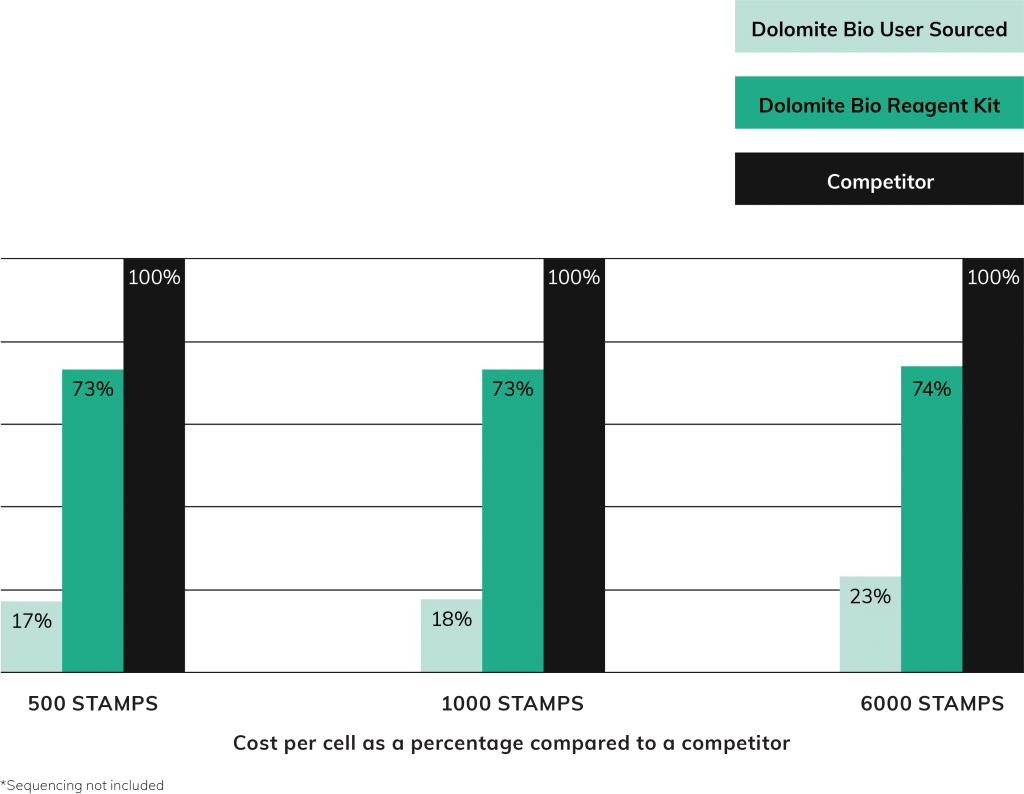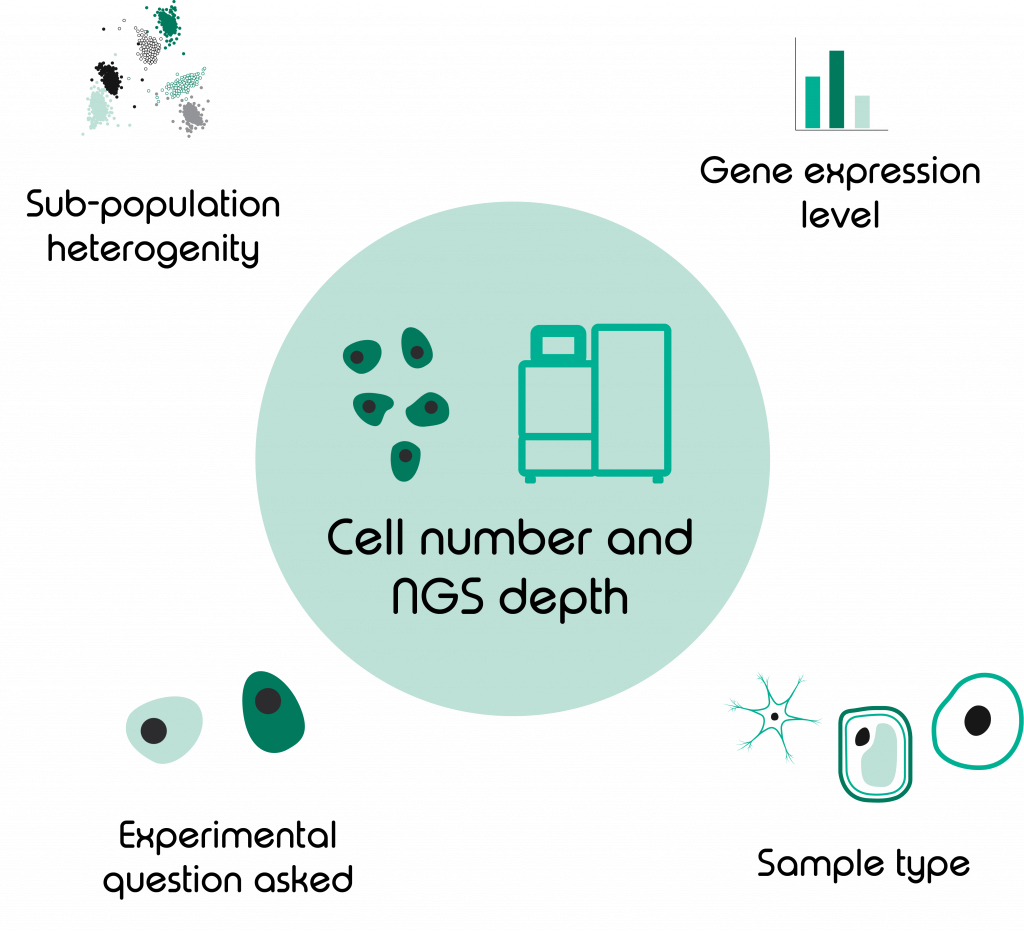What influences the cost of single cell research?
Single cell sequencing is probably one of the most expensive methods you can use to answer your research questions. However, it does deliver a wealth of data that can give you deep insight into cell heterogeneity, external factors, and cell development.
This blog will address the major factors influencing the cost of a single cell experiment and how to reduce this in the long term.
Here is a quick summary of what I will discuss:
The reagent cost
In single cell methods reagent costs are a several magnitudes higher than for bulk sequencing methods.
This is mainly due 2 reasons:
- We are manipulating single cells in individual reactions instead of all cells in bulk.
- Single cell sequencing requires a plethora of reagents from cell dissociation to Next Generation Sequencing (NGS).
That said, there are measures you can take to reduce the cost of said reagents and it all starts with the system purchase. Most of the reagents needed for single cell sequencing are required to perform the workflow steps from encapsulating individual cells to generating the sequencing ready libraries. Most suppliers of cell encapsulation systems will also provide reagent kits containing all the reagents required to perform those steps. However, most commercial kits aren’t exactly cheap and will eat up your budget fast.
So, how can you save on reagent cost?
- Build a home-brew single cell encapsulation system and source all the reagents yourself.
- Choose a single cell system supplier that allows you to source your own reagents.
- Choose suppliers with low-cost reagent kits.
While option 1 is probably the most labor intensive it’s by far the cheapest. So, if you are running on a tight budget and you are not afraid of a bit home crafting; this is your option. For most labs though this will be too labor intensive, and they won’t have the expertise required to build such a system. Therefore, we would recommend option 2, as it can reduce your reagent cost down to less than 30% compared to other commercial suppliers, as well as saving time.

If you need to save time as well as money and you are a high-throughput user of single cell methods, options 3, although more expensive, is likely going to be the best option.
Currently, Dolomite Bio’s reagent kits are about 30% cheaper than the average competitor kits and you have the option of sourcing your own reagents as well. If you would like to learn more about reagent cost, take a look at this page.
Set up of the experiment
Our customers often ask, “How many cells do I need to analyse?” or “How deep do I need to sequence?” The answer we give is not as easy as one might think and can heavily influence cost of the experiment. Any of those questions depend on a few factors (listed below) and can allow you to save cost.
- Experimental question asked
- Sample type
- Level of sub-population heterogeneity
- Expression level of differentially regulated genes
- cell number NGS depth- scRNA-Seq

Let me elaborate on those points; in a bulk RNA sequencing experiment, one is limited only by sequencing depth. In scRNA-Seq you will need to ask yourself if it is more important to sequence a high number of cells or to sequence deep, in order to reach a compromise that fits your budget. Unless of course you have an unlimited budget, in which case you can have the best of both worlds, however for most – this is not the case.
Is the aim of your project to detect as many different cell groups as possible and do you have a high level of sub-population heterogeneity? Then the answer probably is, analyse a higher number of cells. If a sample is heterogeneous, it is especially important to sequence enough cells to observe all representative cell types. The sequencing saturation per cell might be lower here but it will likely be sufficient to detect your sub-populations of interest. A nice tool to calculate how many cells you might need to analyse depending on minimum fraction of rarest cell type and desired minimum number of cells per cell type can be found on this page by the Satija lab.
Equally, there is a certain threshold of reads that is considered adequate to define a gene as ‘expressed’. Therefore, if your goal is to detect as many genes as possible you might want to sacrifice cell number for a higher NGS-depth. This will achieve a higher sequencing saturation per cell.
Besides this, the sample type will also determine if your emphasis should be on read or cell number. Some cell types, due to high numbers of mitochondrial RNA or high cellular RNA levels, require more reads per cell than others.
As a last point I also want to mention that if budget permits, run at least 2 replicates of your experiment. Dolomite Bio’s Nadia instrument will allow you to run up to 8 samples in parallel to reduce batch effects between runs.
Service vs. system purchase
The last point worth discussing is: “Do you actually need to buy a single cell system?”
This question will be particularly relevant for anyone just getting started in single cell research, such as new PIs’ outfitting their labs or scientists about to submit a grant application. Investing in a platform for single cell sequencing is not just capital spend but once invested, unless further funds appear, it locks you into whatever that supplier offers you.
The major question you will need to answer is: how many of your experiments or research questions actually do require single cell data? We get it, it’s the cool new tool and you want to explore it but there is a set number of research questions single cell research can address, but it isn’t necessarily the right tool for everyone. If you are unsure which questions single cell research can answer, take a look at our previous blog in this series here.
If you already know that you are only going to use single cell data for a couple of experiments per year you might be better off with a single cell service such as our Single Cell Consultancy Service . Available world-wide and offering anything from cell dissociation to data analysis. Per sample, this might look like an expensive option, but you will save money in the long run and it can be tailored to achieve exactly what you want, without capital costs. Plus, you will gain the help of experienced experts in this field rather than having to rely only on yourself to make the decisions and analyse the data.
If you are looking at several single cell experiments a month though, purchasing a system will for sure save you money in the long run, although initial spending might be large. Here again, it’s important to just have a look for the supplier’s reagent cost, as those over a long time frame can add up to significant running cost for your lab.
If you would like to learn more about our Single Cell Consultancy Service, why not join our next webinar: Getting started: Why should I use a Single Cell Consultancy Service? On 11th August, 10AM CEST
Register for the free, live webinar here

